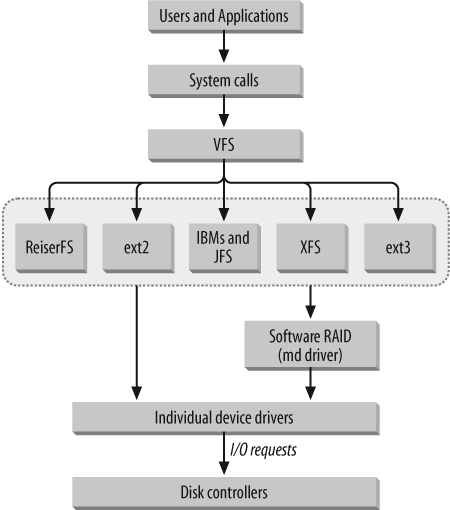The Linux Virtual Filesystem (VFS)
The Virtual Filesystem (VFS) was developed to provide a common interface for many filesystems to interoperate with the Linux kernel. The VFS is an additional layer of abstraction between specific filesystem implementations and system calls. Figure 6-1 illustrates the relationship between filesystems, block devices, and the VFS.

The Linux kernel and the VFS impose some limits that affect the usability of any filesystem. Originally, the Linux file access API used a signed 32-bit value to represent file sizes on 32-bit systems such as x86 and PowerPC. This imposed a serious limit because file size could never be larger than a single 32-bit value. Using 32-bit values to store file sizes limits users to a maximal file size of 231 (2,147,483,648) bits or 2 GB. Beginning with the 2.4 series kernel, this limit was raised to 1 terabyte (TB) or 1000 GB. Patches to correct the 2 GB limitation are available for 2.0 and 2.2 series kernels. Libraries and applications must also be patched if you want large file support. So even with a patched kernel, not all applications will support large file sizes natively. For more information on large file support, see http://www.suse.de/~aj/linux_lfs.html. Also note that many distributions that shipped 2.0 and 2.2 series kernels came with large file support already implemented. Check ...
Get Managing RAID on Linux now with the O’Reilly learning platform.
O’Reilly members experience books, live events, courses curated by job role, and more from O’Reilly and nearly 200 top publishers.

